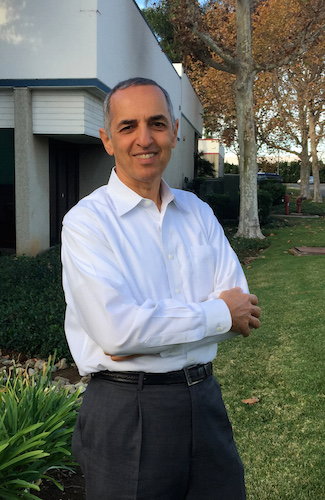Jack Gershfeld, President and CEO, Altinex

Sometime in the early ‘80s, an IBM salesperson was set to make an important presentation utilizing a large screen projector, but he was in dire need of a way to connect the CGA video output from the PC to an RGsB input on the projector. So he called a bright young engineer named Jack Gershfeld.

“After I sent him the first prototype, he called me back and said, I need 50—no, make it 100—pieces as soon as possible,” Gershfeld recalled. “The trajectory of my work for the next 30 years was securely sealed at that moment.”
Gershfeld’s early development was also mentored by the sharp advice of a few friendly engineers. While working on a Hubble telescope project at the firm Perkin-Elmer, senior engineer Wes White told him, “Jack, make your design work on paper before you head down to the lab.” It’s a simple concept that shaped the way Gershfeld envisions the way he designs products today. Then at Contrac, an engineer named Grayson Johns taught him to make each design “personal to the bone,” guidance that “was instrumental in helping me to constantly seek new solutions and obsolete them as soon as a better solution became available,” Gershfeld recalled.
Over the years, after founding Extron, Inline, and eventually Altinex, Gershfeld has found inspiration directly from customers. He recalls one example back during the time of CRT displays. In a problem solving session with a local integrator trying to figure out the refresh rate of a display, the light bulb went off in Gershfeld’s head. He realized refresh rate could be measured by detecting the electromagnetic field around the CRT. “The prototype was completed the next day, and the product was released at InfoComm a few months later,” he said. Tens of thousands of those units were sold before the introduction of LCDs rendered them obsolete.
The biggest influence on his work today still comes from the customer, through friendly advice, performance improvement demands, or the camaraderie of “cheerleading.” Throughout his career, he attributes his success to his wife of 34 years, Lola, citing her values, guidance, tenacity, and joy as profoundly effective attributes.
Through all the dramatic changes in technology he has witnessed, Gershfeld has had an overwhelming drive to make technology invisible to the user. Easy is the other key idea he looks to emulate in his designs, from the install to the use to the maintenance. When asked about his proudest achievements, instead of rattling off some SKUs, he points to the privilege of working with some of the best engineers in the industry, and every other person whom he has witnessed change over the years. “These people were the key in developing, financing, and building universal interfaces, wall mount interfaces, table top solutions, modular AV solutions, large scale matrix switchers, and much more.”
Gershfeld has not only been on the forefront of the AV industry’s advancement, he is well accustomed to witnessing change. Back in 1980, Gershfeld recalls, “We were entering an incredible vortex of personal computers, which created a huge whirlwind of innovations and discoveries.”
A daily selection of the top stories for AV integrators, resellers and consultants. Sign up below.
Flash-forward to the incredible technological changes the world is in the throes of, Gershfeld predicts, “We are not done innovating in the AV industry. Maturity is strongly visible and focusing on consumerism will be critical for a successful future.”
But perhaps the most insightful wisdom he has to offer is something he culls from one of the many individuals that have helped him shape the industry, former InfoComm executive director, Randal A. Lemke, who told him, “Jack, if the going gets easy, you are not climbing!”
Lindsey M. Adler is editor of SCN. Follow her on Twitter @lindseymadler.
Lindsey M. Adler is an audiovisual storyteller based in New York.

